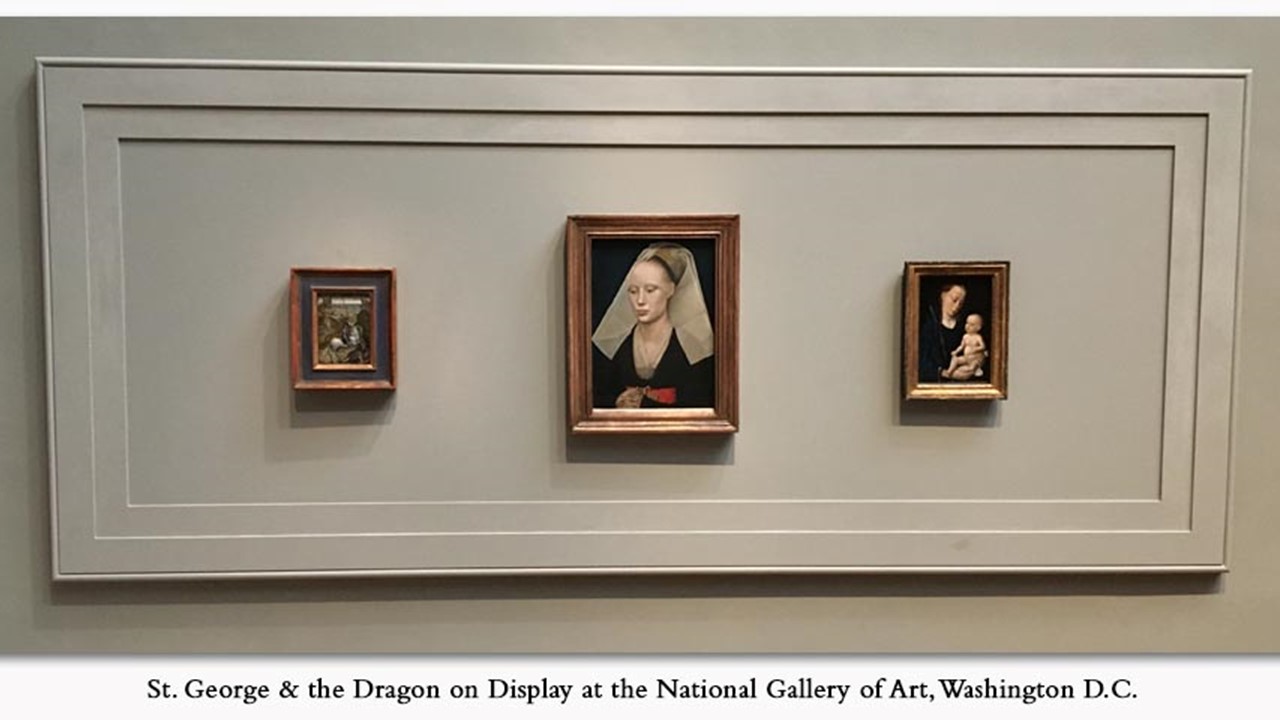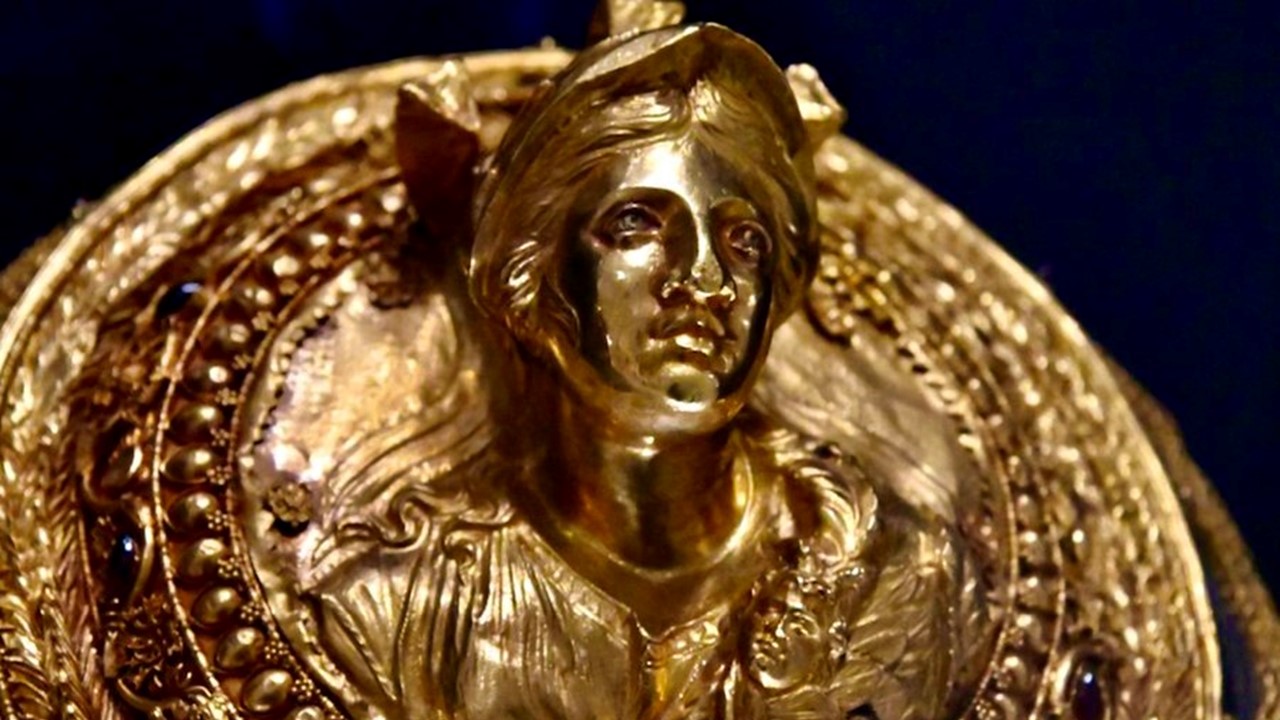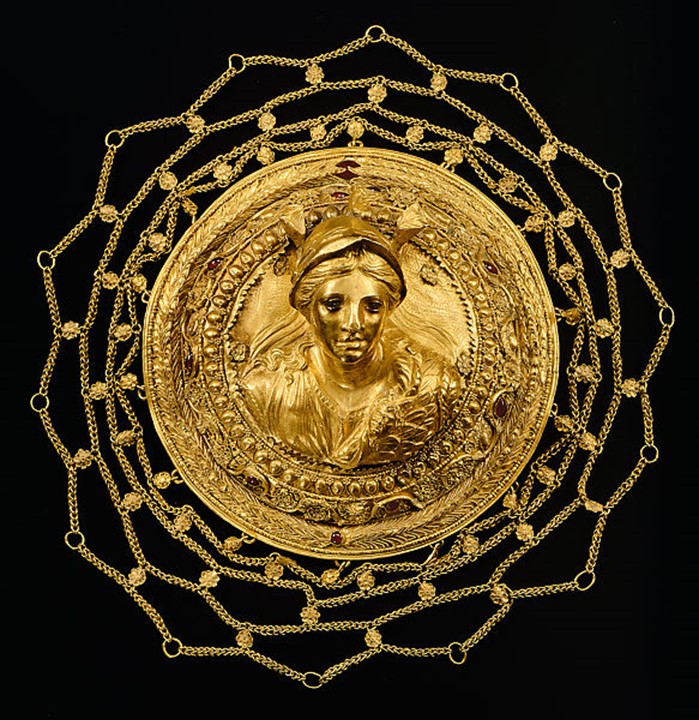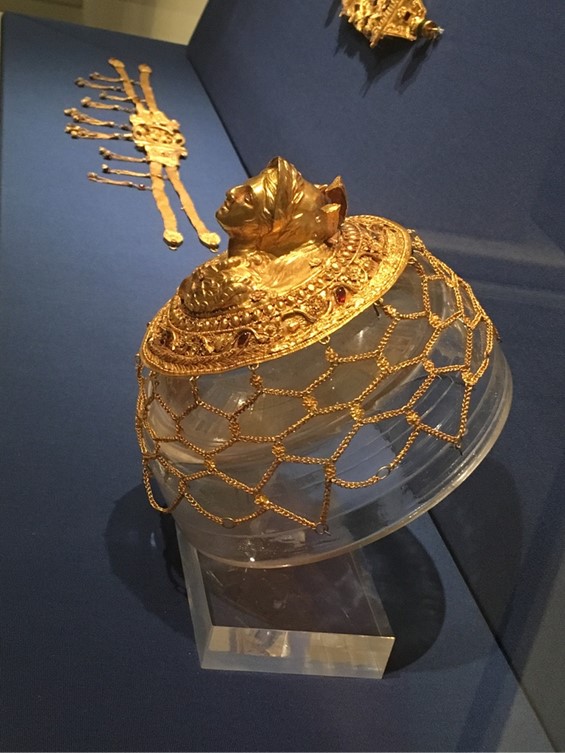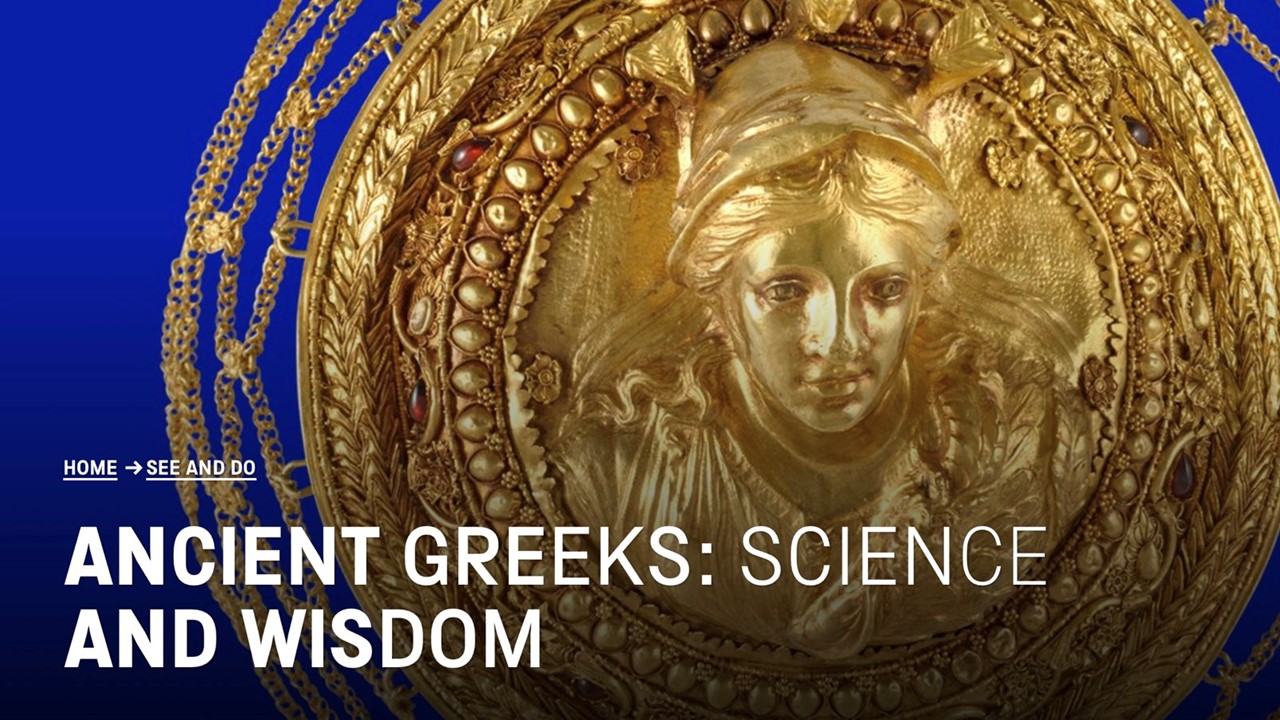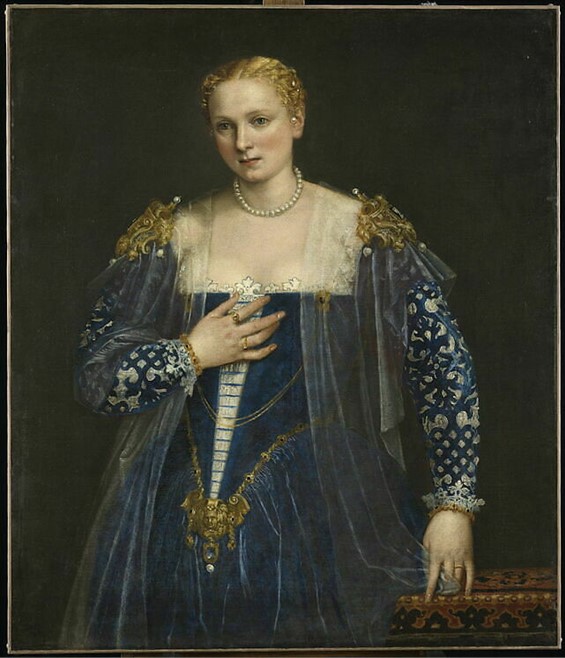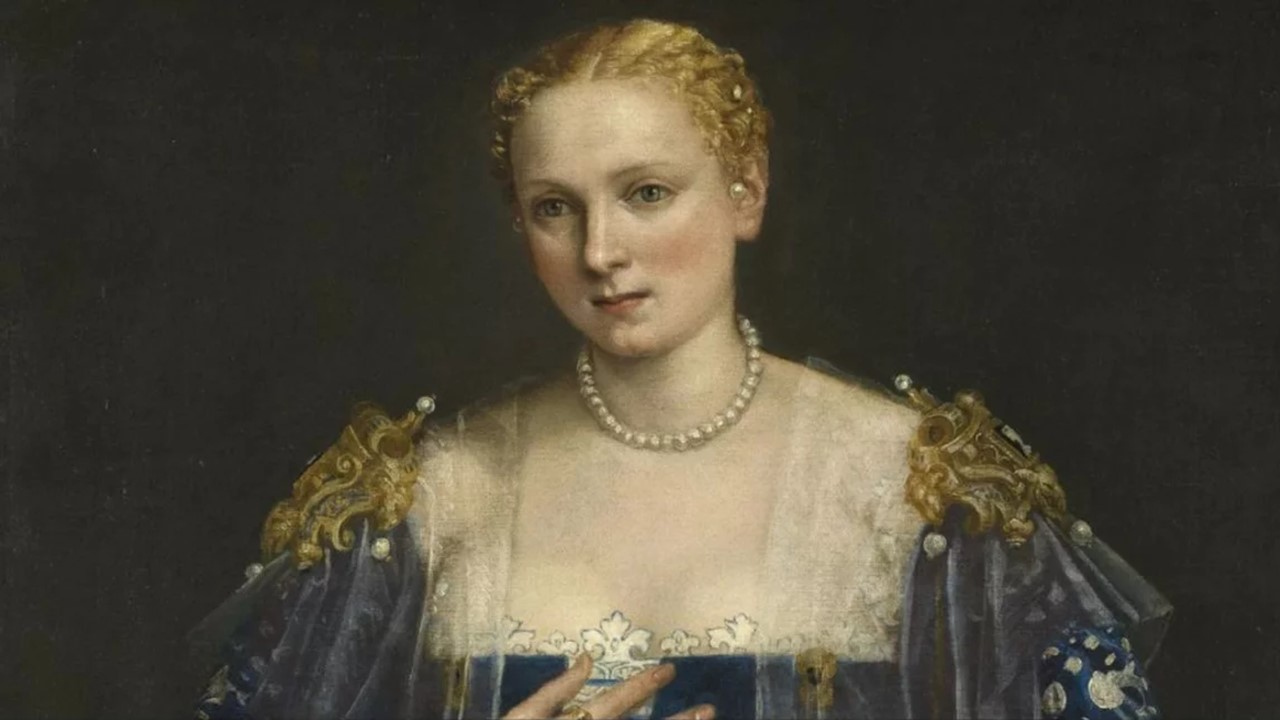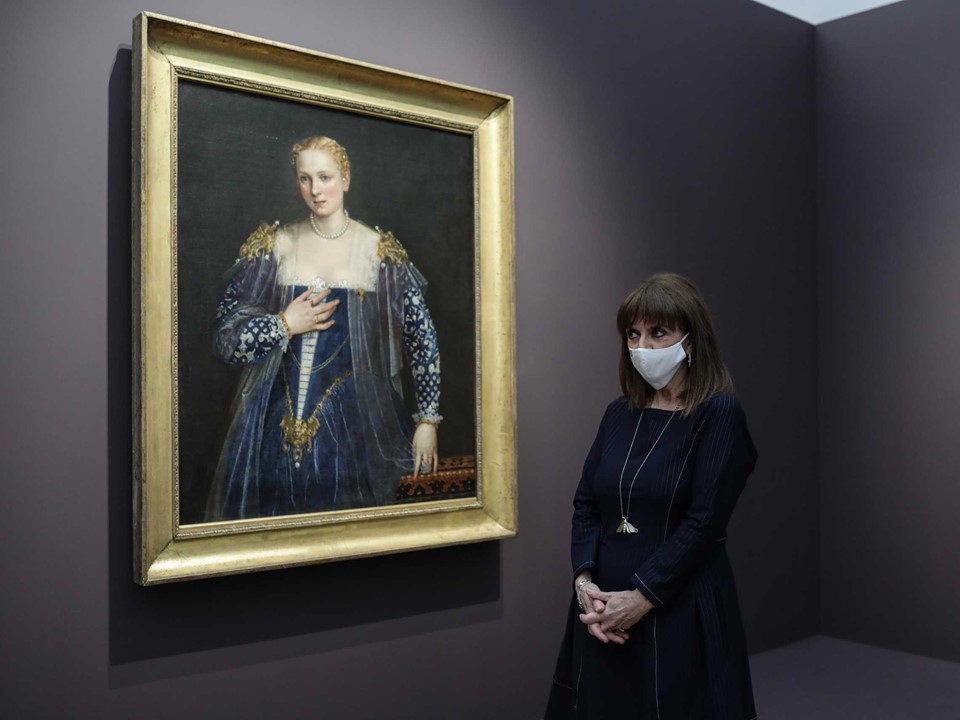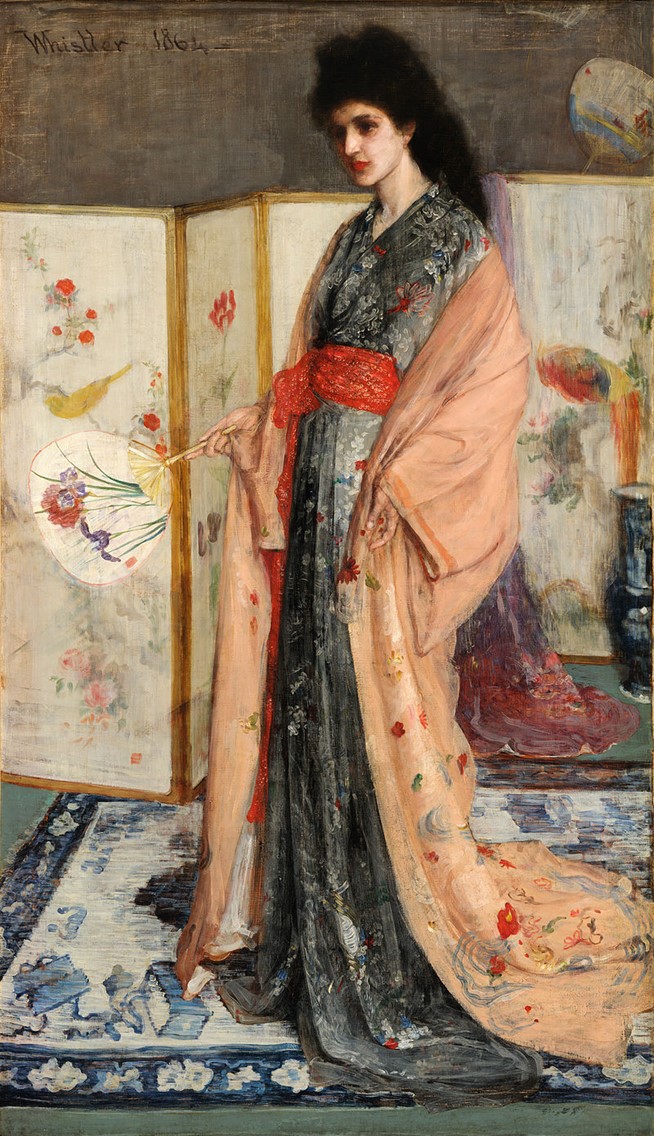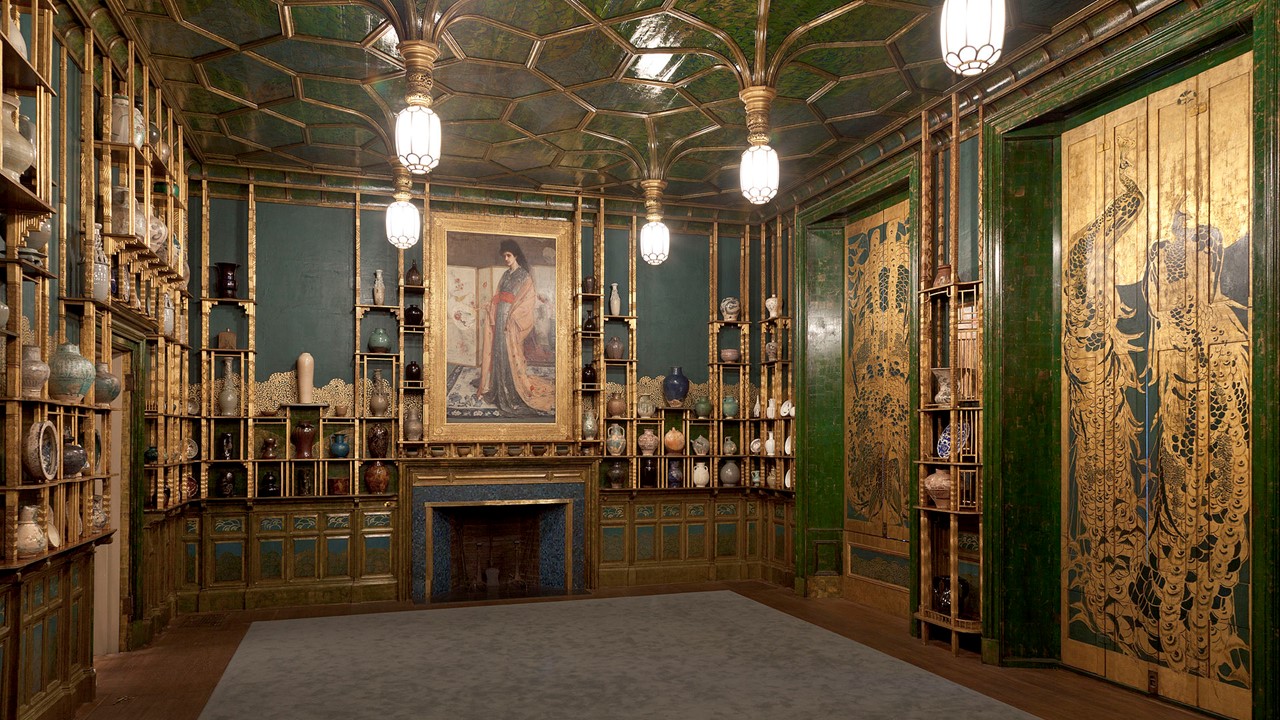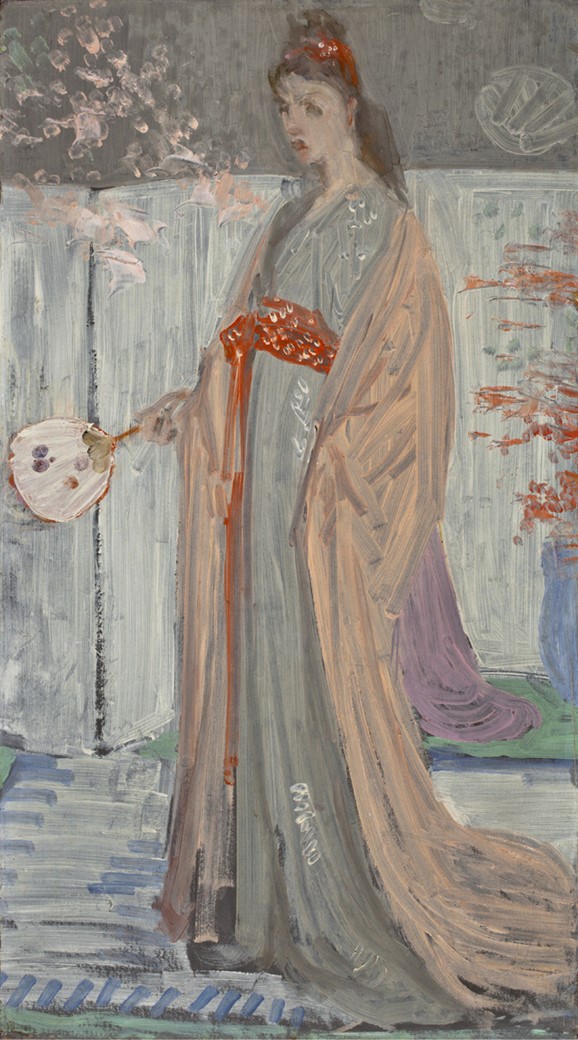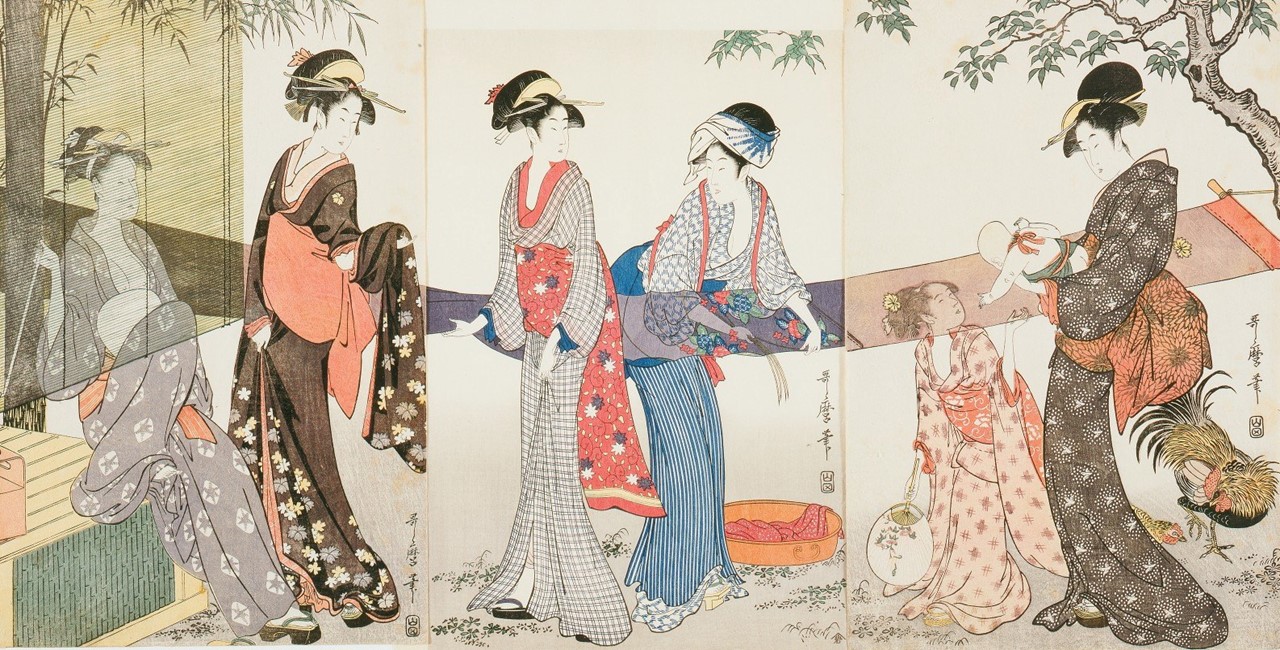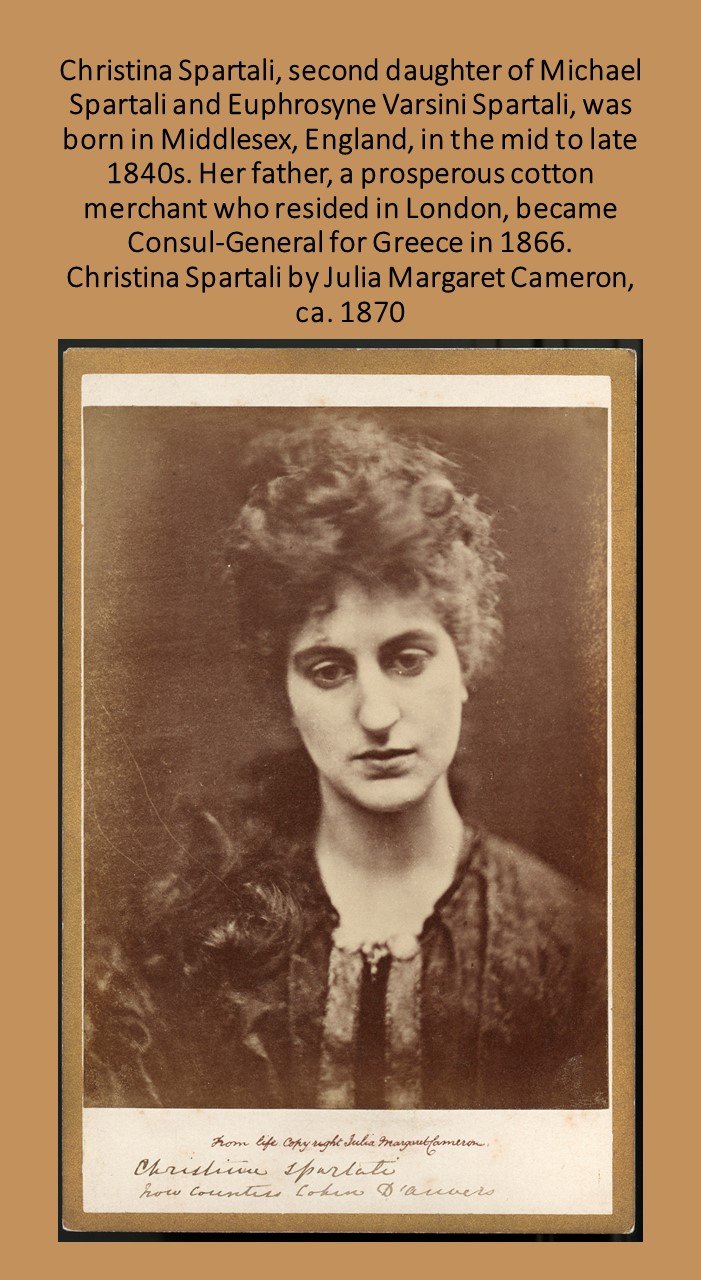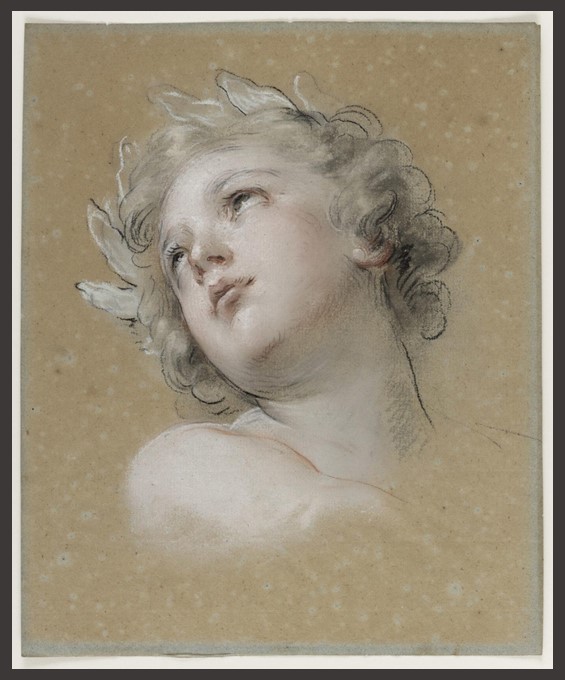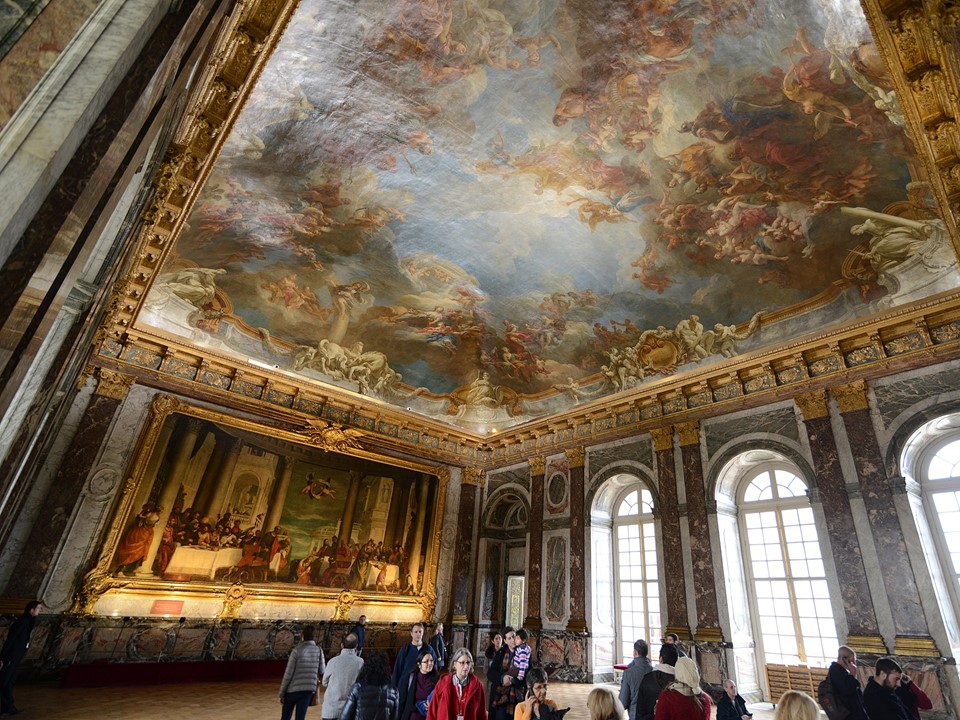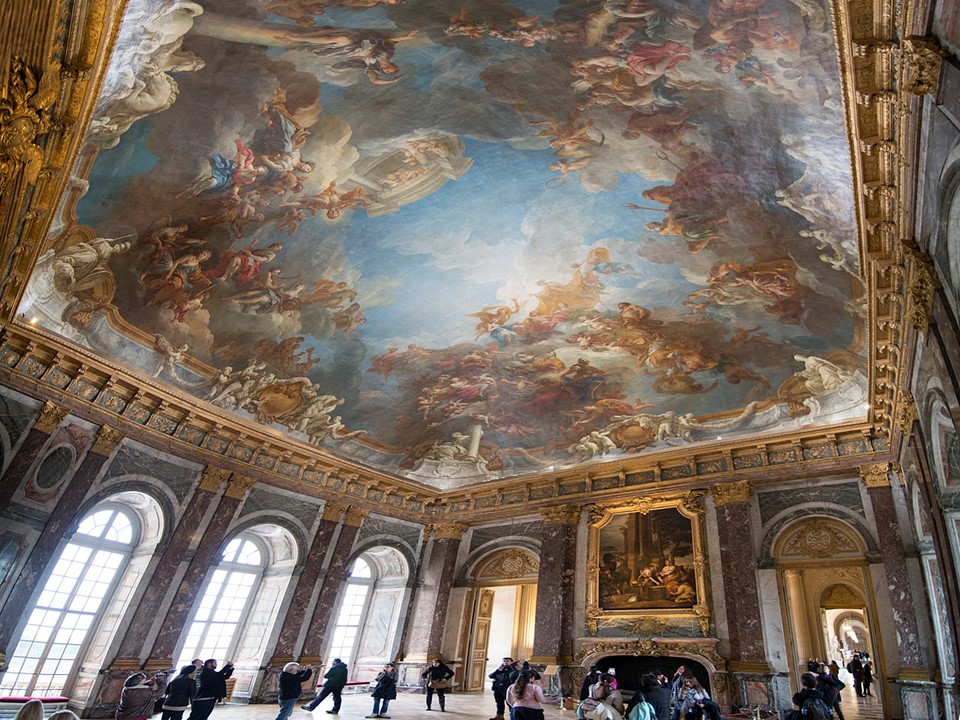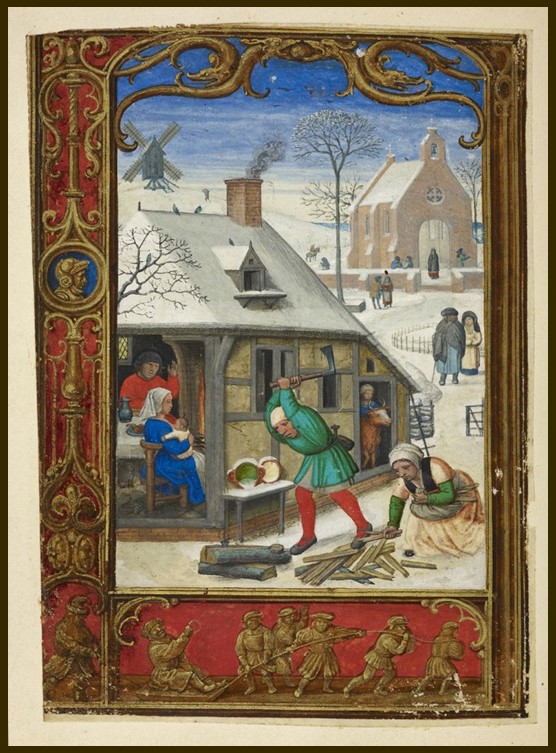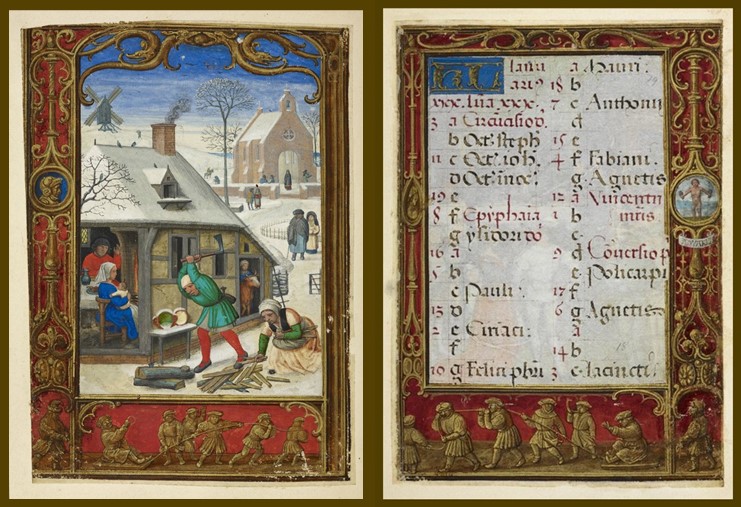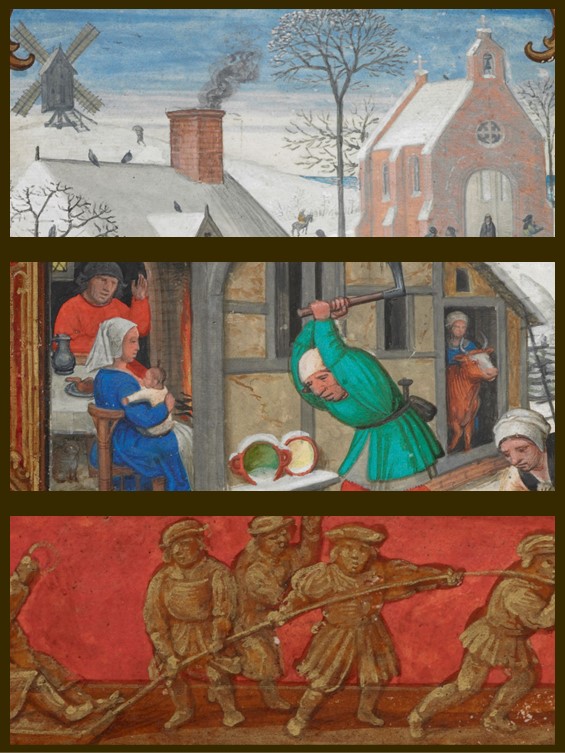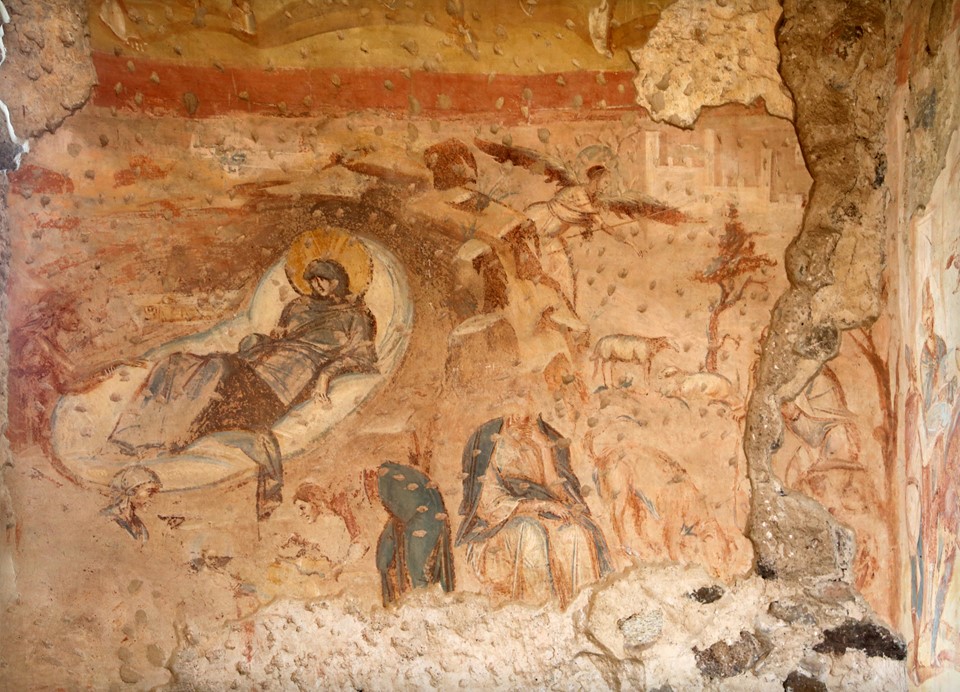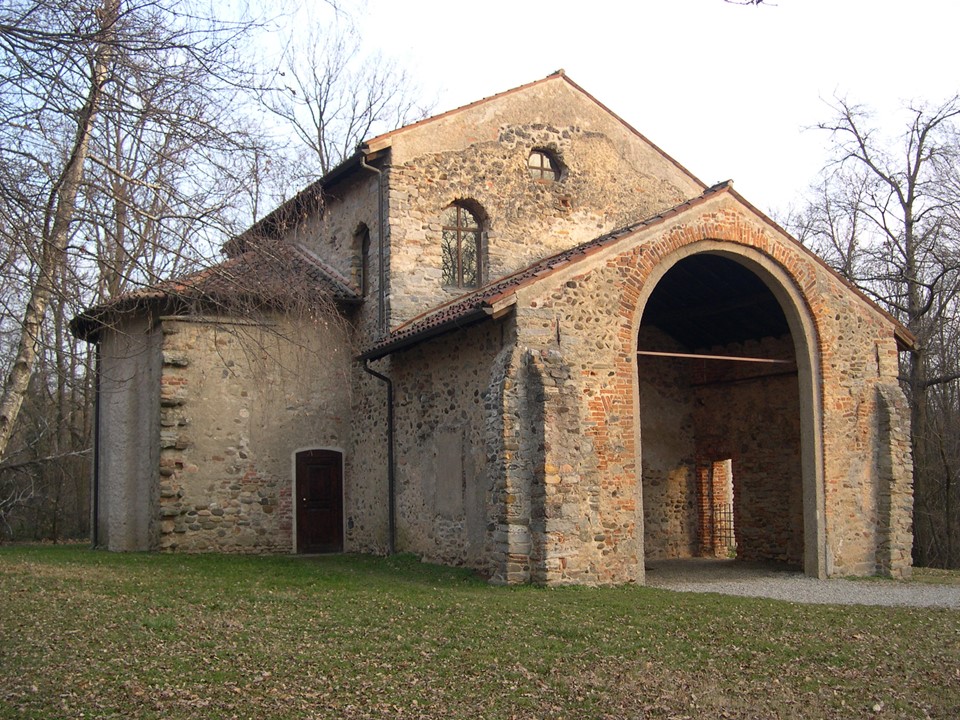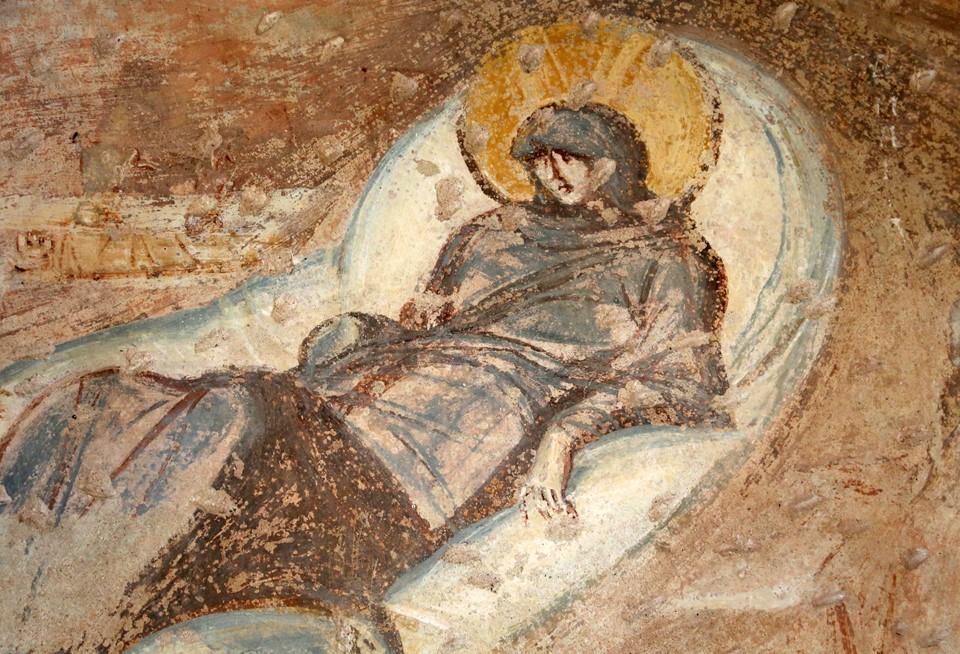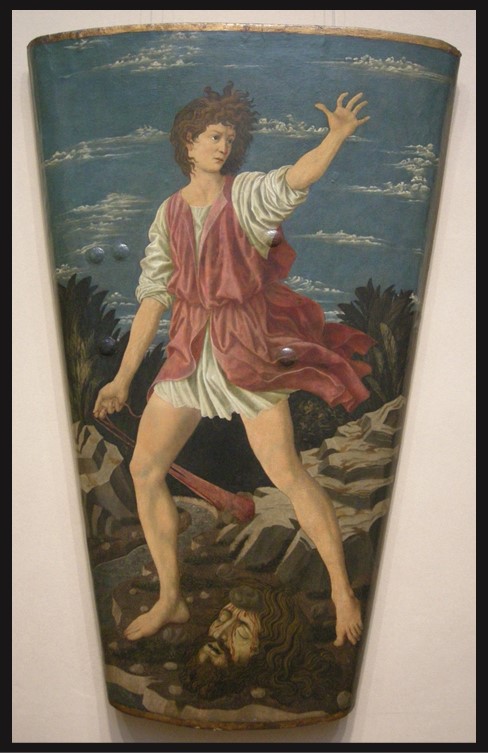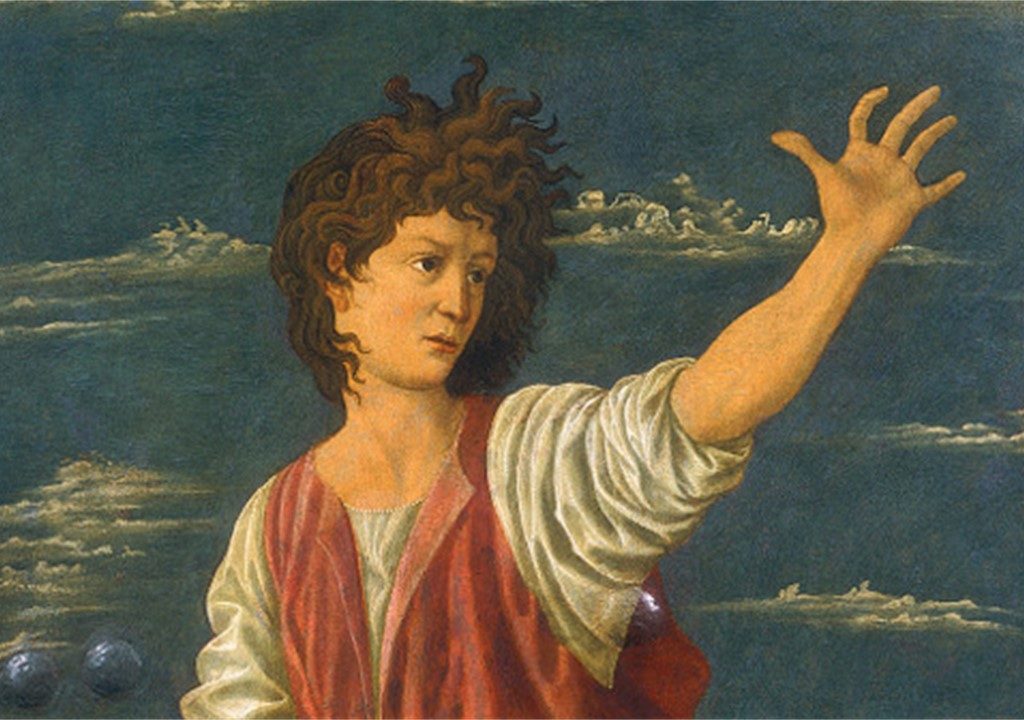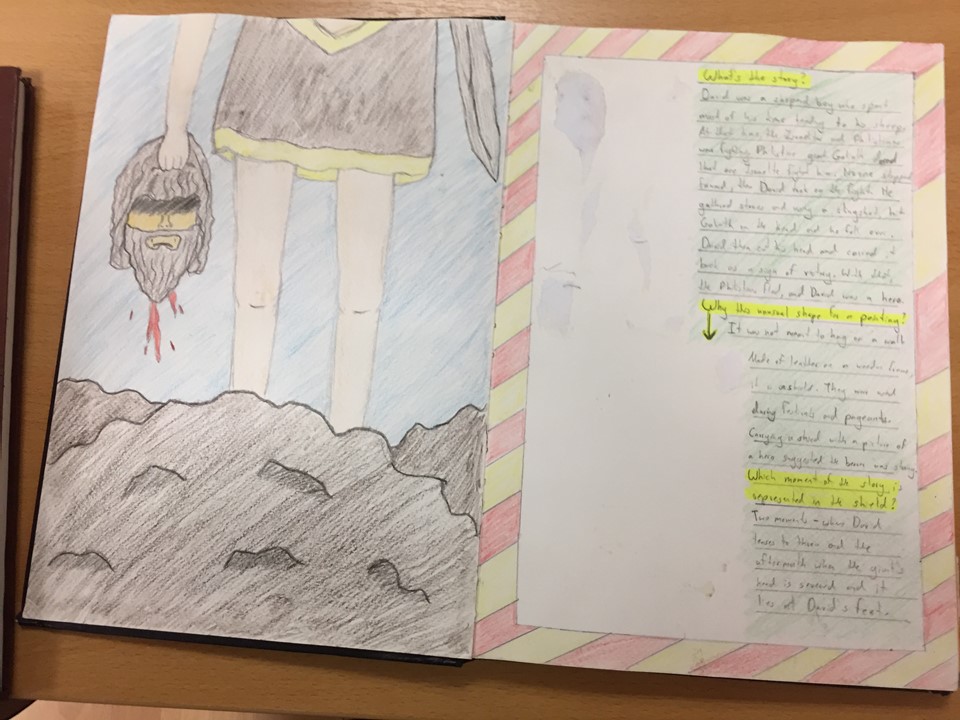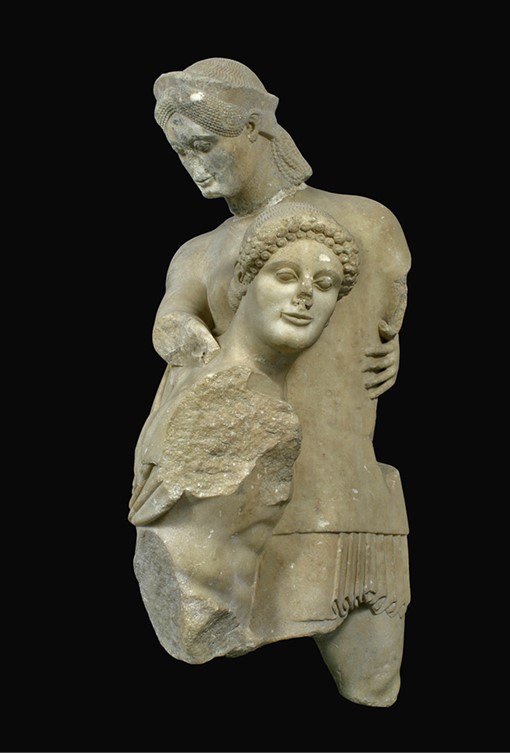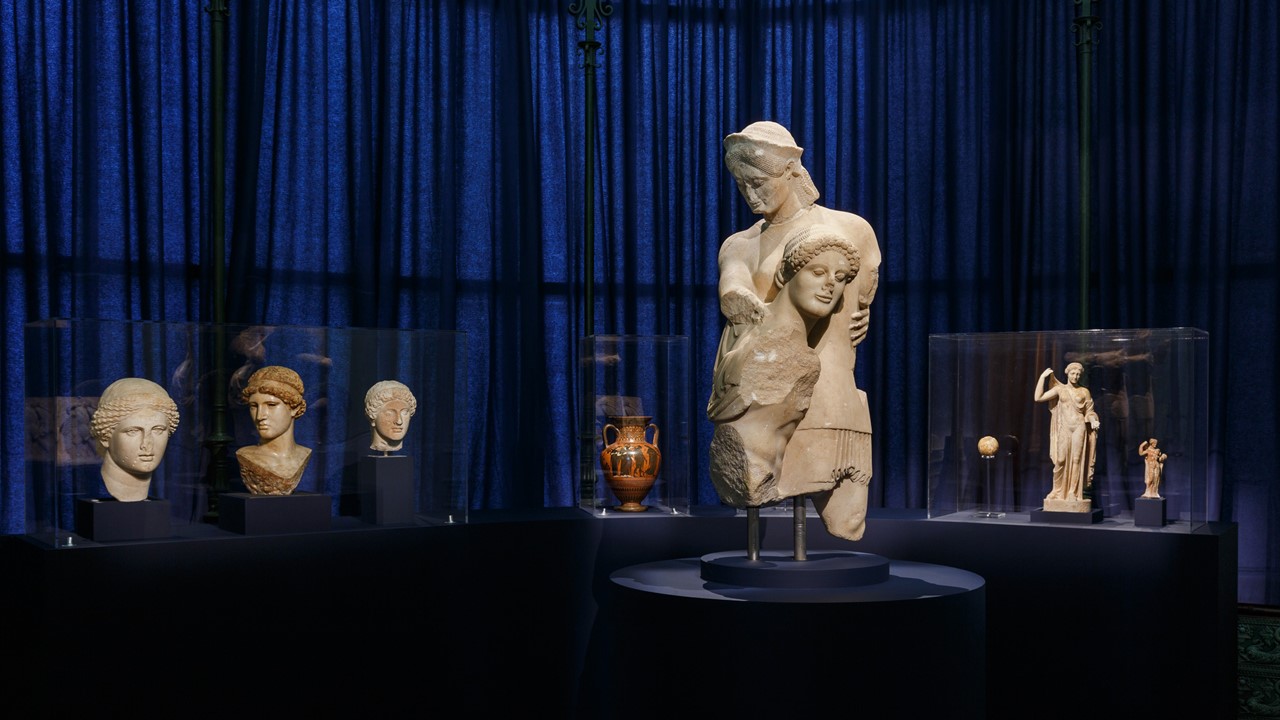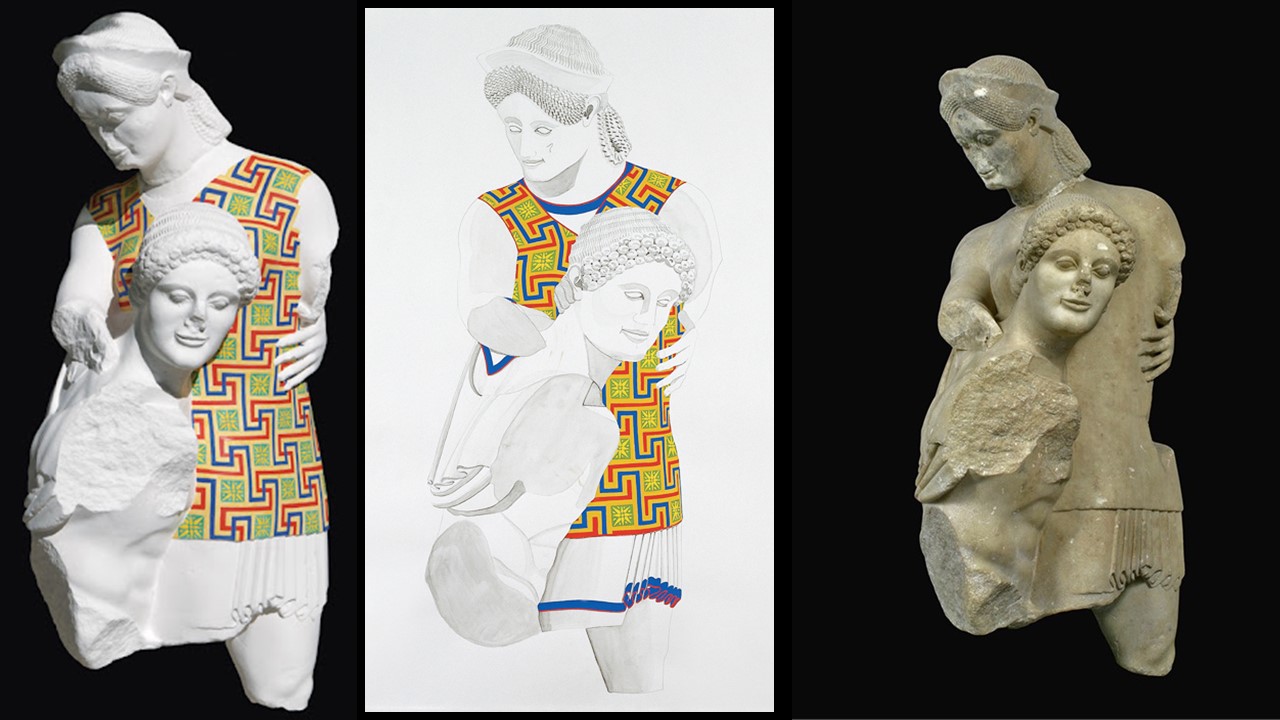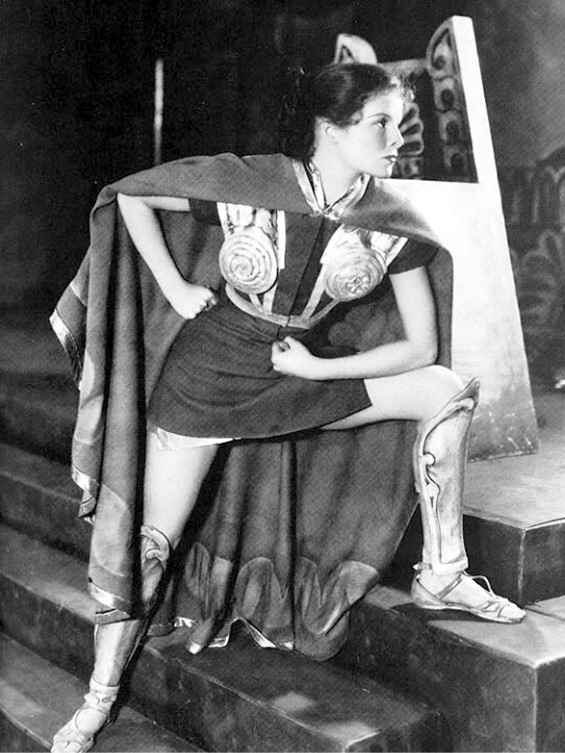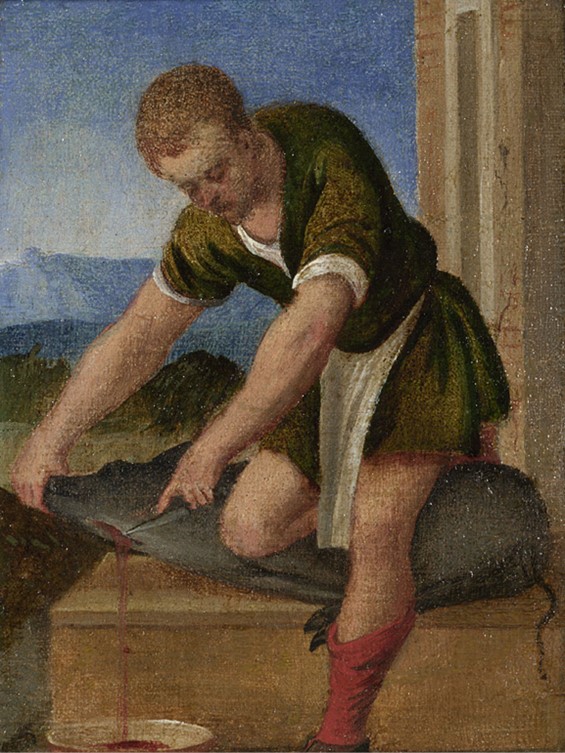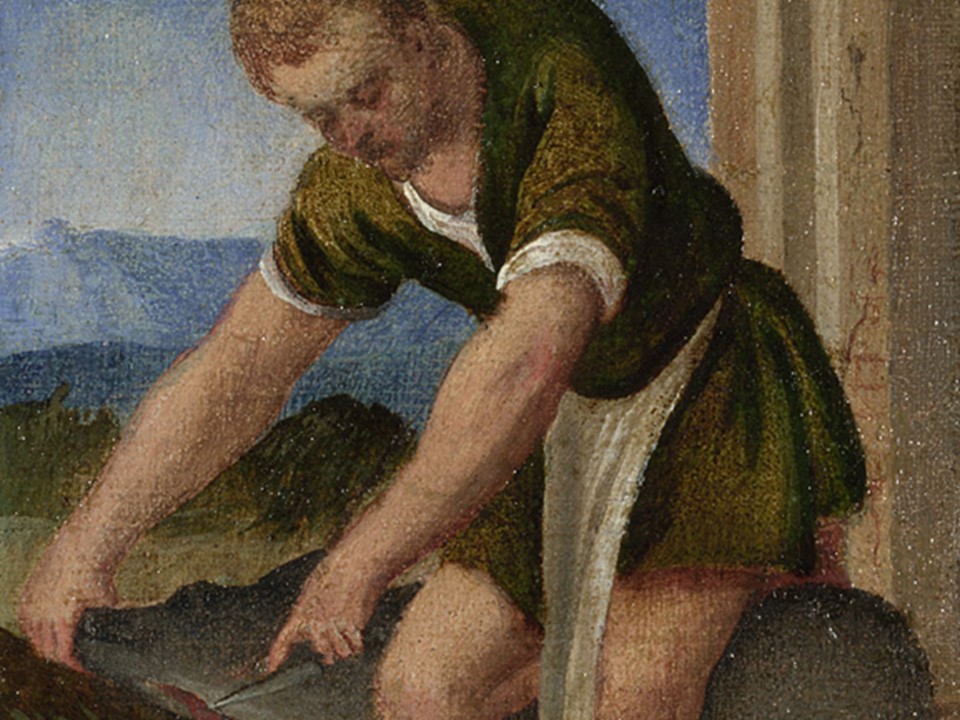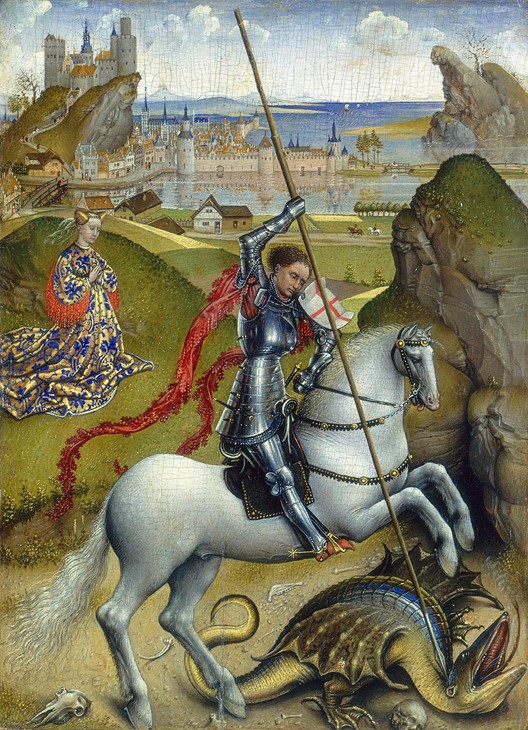
Saint George and the Dragon, 1432-1435, oil on panel, 14.3×10.5 cm, NGA, Washington DC
https://commons.wikimedia.org/wiki/File:Saint_George_and_the_Dragon_Rogier.jpg
The legend of Saint George and the Dragon, popular in literature and the visual arts since the 11th century, has the right measure of Christian faith, fervor, and miracle! It is a joy to read about, and marvel …the king had his daughter dressed like a bride, embraced and kissed her, gave her his blessing, then led her to the place where the dragon was. / When she was there Saint George passed by, and seeing the lady, he asked her what she was doing there. / She said, “Go your way, fair young man, lest you perish as well.” / Then he said, “Tell me why you are weeping.” / When she saw that he insisted on knowing, she told him how she had been delivered to the dragon. / Then Saint George said, “Fair daughter, doubt not, for I shall help you in the name of Jesus Christ.” / She said, “For God’s sake, good knight, go your way, for you cannot save me.” / While they were thus talking together the dragon appeared and came running toward them. Saint George, who was on his horse, drew his sword, made the sign of the cross, then rode swiftly toward the dragon. He struck him with his spear, injuring him severely. / Then he said to the maid, “Tie your belt around the dragon’s neck, and be not afraid.” / When she had done so the dragon followed her meekly. She led him into the city, and the people fled in fear. / Saint George said to them, “Doubt not. Believe in God and Jesus Christ, and be baptized, and I shall slay the dragon.” / Then the king and all his people were baptized, whereupon Saint George killed the dragon and cut off his head… Saint George and the Dragon by Rogier van der Weyden is a marvel to explore! https://sites.pitt.edu/~dash/stgeorge1.html
I particularly like Roger van der Weyden’s small painting of Saint George and the Dragon at the National Gallery in Washington DC. Probably the earliest of Roger’s paintings, Saint George and the Dragon is of exceptionally high quality. Some scholars discuss how close the painting is to the art of the International Gothic Style, while others find close affiliations to the Netherlandish tradition of Manuscript Illumination; yet they all agree that Roger’s characteristic linearity is evident, his tendency in depicting courtly chivalric elegance apparent and a microscopic yet realistic and atmospheric landscape all too powerful! https://www.nga.gov/content/dam/ngaweb/research/publications/pdfs/early-netherlandish-painting.pdf pp. 264-270
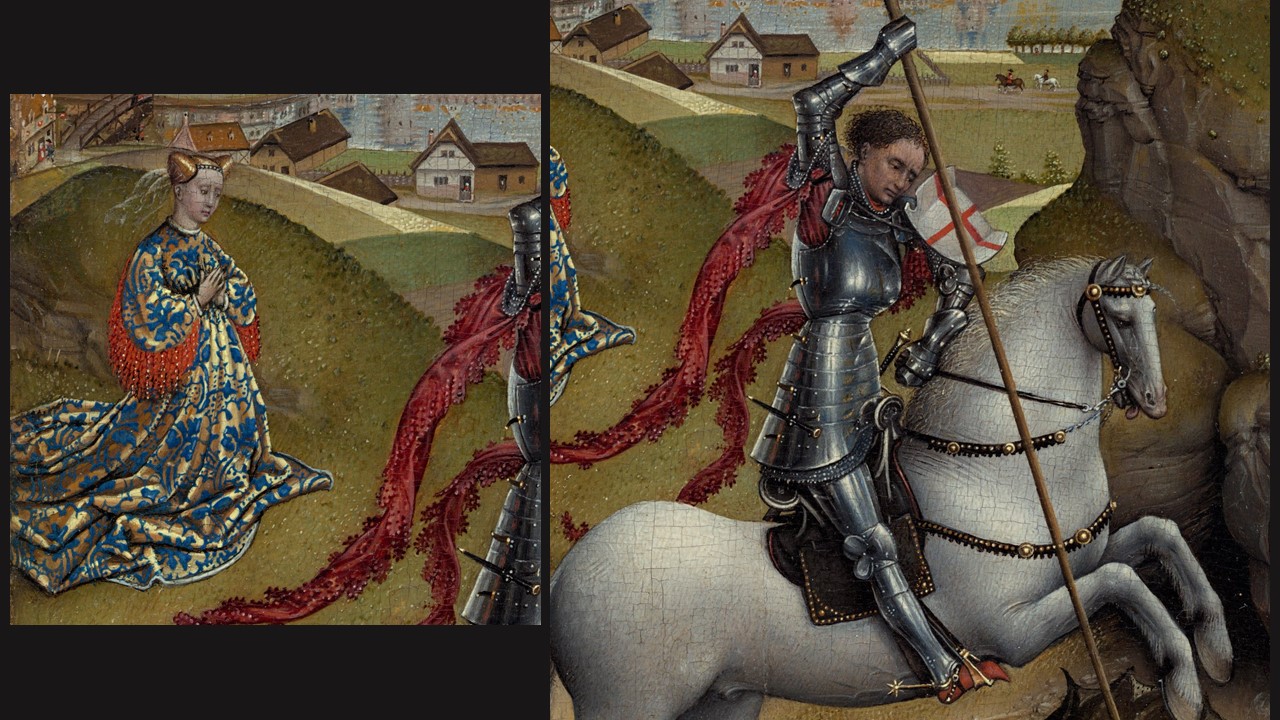
Saint George and the Dragon (details), 1432-1435, oil on panel, 14.3×10.5 cm, NGA, Washington DC
https://twtext.com/article/1246172930633015296
Rogier van der Weyden is a favourite Flemish artist… thoughtful and insightful, overwhelming yet sincere in his art. According to the National Gallery (London) experts, he was internationally famed for the naturalism of his detail and his expressive pathos. He created a range of types – for portraits and for religious subjects – which were repeated throughout the Netherlands, the Iberian peninsula, and even Italy, until the mid-16th century. https://www.nationalgallery.org.uk/artists/rogier-van-der-weyden
As is the case with many Early Flemish painters, we know little about Rogier van der Weyden’s life. We know, for example, that for almost five years, between March 1427 to August 1432, he was “apprenticed” to Robert Campin in his hometown of Tournai. He couldn’t have chosen a better teacher/mentor. On the 1st of August 1432, Rogier became a master of the Tournai guild, entitled to undertake work there on his own account, opened his own workshop, acquiring success, and prestige. It is interesting how he maintained workshops in both the cities of Tournai and Brussels whereby 1436, it has been documented, that… he was made painter to the city of Brussels and that… in 1450 he may have traveled to Rome. . https://www.nationalgallery.org.uk/artists/rogier-van-der-weyden and https://www.museodelprado.es/en/the-collection/artist/weyden-rogier-van-der/2f4ef580-41c0-4756-a74c-d8ebda889668
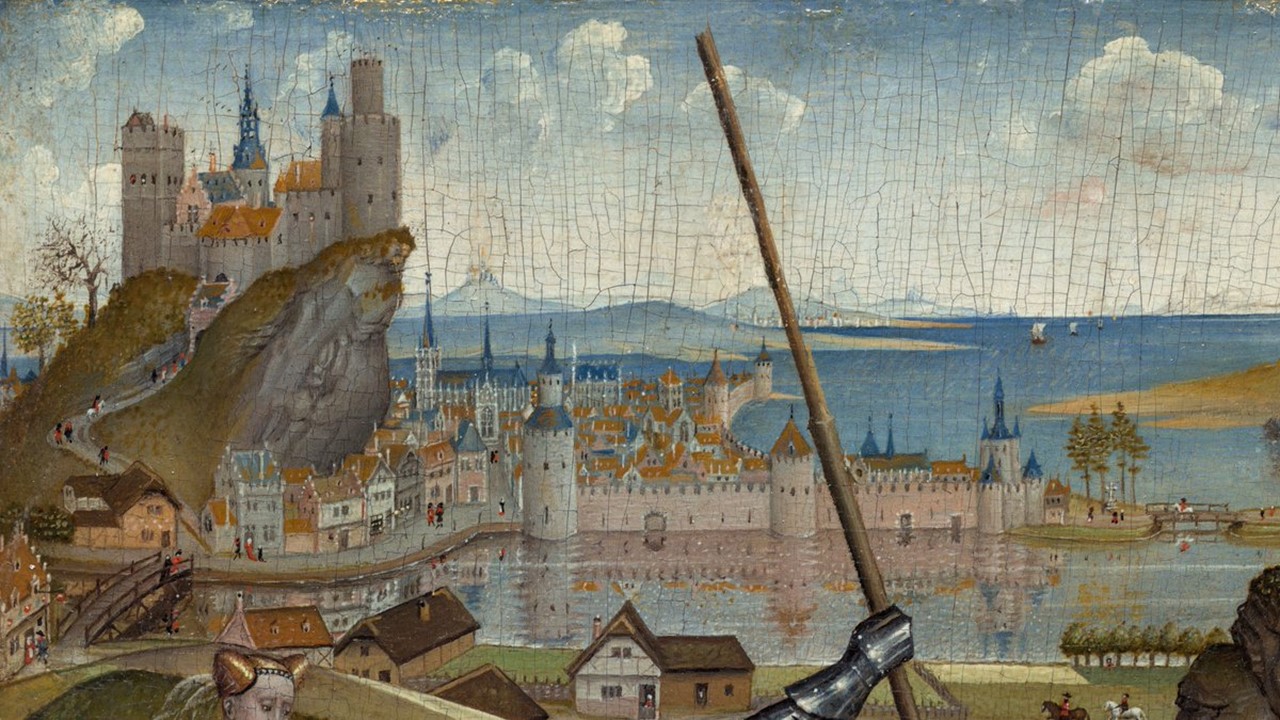
Saint George and the Dragon (detail), 1432-1435, oil on panel, 14.3×10.5 cm, NGA, Washington DC
https://twtext.com/article/1246172930633015296
Rogier van der Weyden was a prolific painter and an astute businessman. By 1443, he had acquired two large, adjoining houses in Brussels, in the posh “Golden Street,” in close proximity to the Coudenberg Palace, the residence of the Duke of Burgundy, the Town Hall and the Markt (now the Grand-Place), the centres of civic life and commerce; and the Collegiate Church of Saint Gudula (now the city’s Cathedral). It is believed, by the Prado Museum experts that he ran a busy workshop, and he may have had to feed a large team. One of his two houses could have been the place where he and his assistants worked, where his apprentices, and perhaps other collaborators, lodged, and where pictures were displayed for sale to patrons like Philip the Good, Duke of Burgundy, foreign princes, as well as for city and church dignitaries. https://www.nationalgallery.org.uk/artists/rogier-van-der-weyden
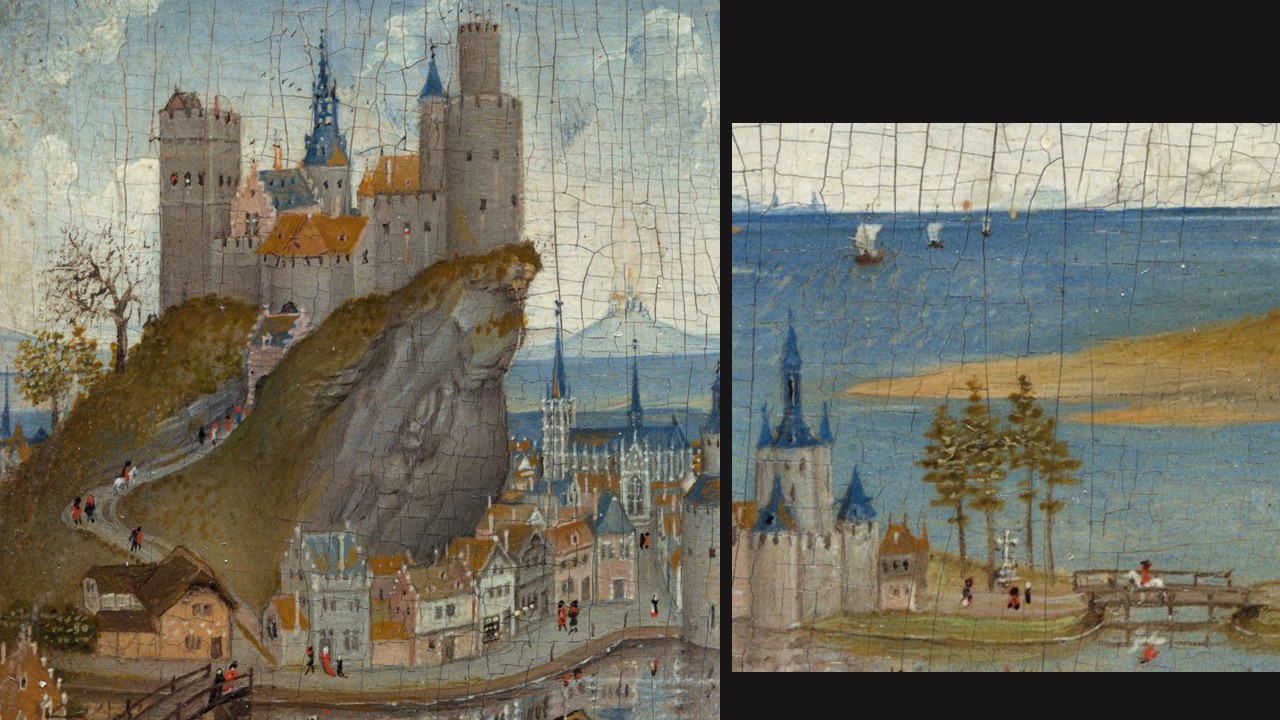
Saint George and the Dragon (details), 1432-1435, oil on panel, 14.3×10.5 cm, NGA, Washington DC
https://twtext.com/article/1246172930633015296
The small painting of Saint George and the Dragon has all the characteristics of Rogier’s paintings that I find endearing… an imaginary landscape, rich in detail rendered with the greatest clarity and realism, amazing interest in the depiction of light, as we see it reflecting on George’s armor and the dragon’s scales, elegance, chivalry, and pathos! What more can you ask!
For a PowerPoint on Rogier van der Weyden’s Altarpieces, please… Check HERE!
For a Student Activity, check NGA’s Eye for Art Pamphlet… https://www.nga.gov/content/dam/ngaweb/Education/learning-resources/an-eye-for-art/AnEyeforArt-RogierVanDerWeydenRaphael.pdf
